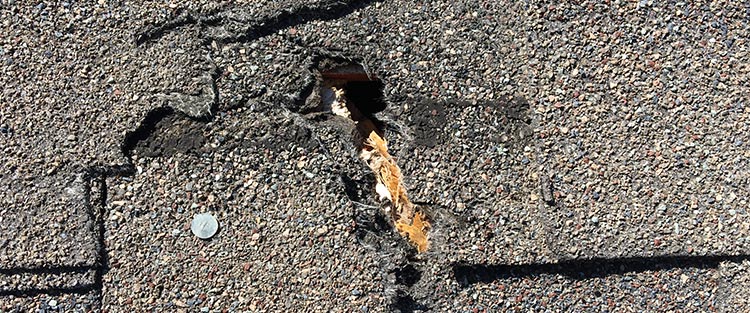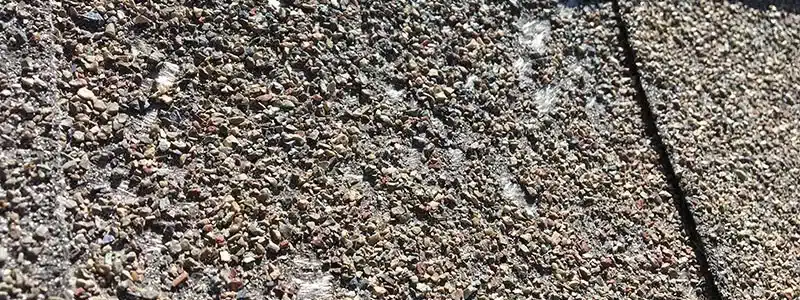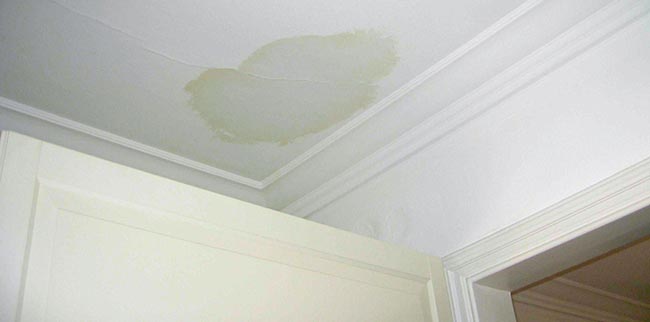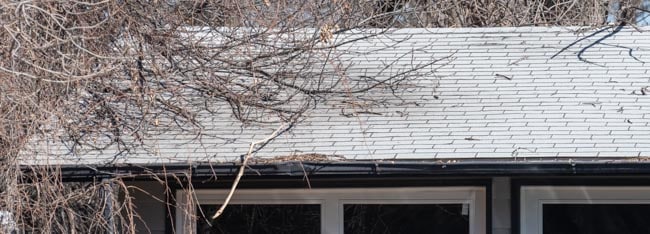You look at the weather forecast and notice some rain is imminent. It’s Spring in Colorado, and that means there might also be hail in that rain storm. What do you do? Of course you pull the car into the garage. Cover your glass patio table so hail doesn’t shatter it. But what about your roof? Is your roof prepared for a hail storm? Do you have any loose, missing, or worn-out shingles? When was the last time you looked at your roof?
Having a roof that’s hail storm ready is like being ready for a boxing match – the more prepared you are, the fewer scars you’ll have when you emerge from the fight. If your roof isn’t prepared for a hail storm, it won’t hold-up as well as it should have, had it been prepared.
Before hail storm season, you should ask yourself if your roof is prepared for hail. In order to answer this question, you should look at your roof, or have it inspected by us for free, to determine its current condition. If we inspect your roof, we’ll let you know if it’s good to go or it’s in need of repair. If it’s found to have problems, you should get it fixed right away to prevent further damage and more costly repairs.
Short Answer: A roof that’s hail storm ready is one that’s damage-free, has no holes or leaks, isn’t missing any roofing material, and is insured.

How to Get Your Roof Hail Storm Ready:
Take before and after photos
Look for existing damage, such as damaged shingles and holes
Check the age of your roof
Remove any overhanging tree branches
Make sure your roof is insured
To get your roof hail storm ready, consider the following 5 items.
1. Before and After Photos
If it’s been a while since you’ve looked at your roof, it will be nice to have before and after hail storm photos so you know how much damage the hail storm caused. Even if the hail storm didn’t produce large stones or cause any damage to your roof, you might appreciate documenting how your roof is aging and wearing. Your insurance agent and roofing company would appreciate it, too 😉
2. Check Your Roof for Existing Damage
A. Missing Granules

If you notice a lot of granules on the ground or in your gutters, this is a sure sign of worn out asphalt or metal shingles. Replace them right away. We offer free inspections and estimates. You should get your roof replaced before the next rain storm to prevent further damage to your roof and house. If ignored, a roof that’s this worn-out will leak, and is more vulnerable to rain and hail.
B. Holes

Falling debris, such as tree branches, can puncture your roof and create leaks. Here in Colorado, strong winds can pick-up objects, such as patio umbrellas, and deposit them onto your roof, puncturing the roof. You should check your roof for holes before the next storm, to prevent further damage to your roof and house. Holes in roofs freely allow water to enter directly into your attic. This leads to electrical fires and shorts, mold and rot in your attic, and more.
C. Water Damage

A stain on your ceiling is an almost sure sign you have a leaking roof. If your roof has past water damage, and you didn’t get around to fixing it, get it fixed before the next rain or hail storm. Putting-off repairs will only further damage your roof and cost more to fix. Roof water leaks can cause electrical fires, mold in your attic, stains on your ceiling and more.
D. Damaged Shingles

If you notice loose or damaged shingles, secure the loose shingles, and repair or replace the damaged ones right away. Wind can tear off loose roofing material, be it asphalt shingles, metal, or any other roofing material. If airborne, roofing material can cause serious personal injury or property damage. Damaged shingles can let rain past causing more damage to your home, costing you more money later. If you are uncomfortable getting onto your roof, contact us for a free inspection.
3. Check Roof Age
Check the age of your roof. If you know it’s approaching the end of its life, contact us for a free inspection and estimate. We can tell you if your roof has more life in it or if it’s time for a new one. If you did not replace your roof since you’ve owned the house, you know it might be time for a roof replacement if your neighbors are replacing theirs.
4. Overhanging Trees

Check overhanging trees for either dead branches that could fall onto your roof, and/or branches that are too close to your roof that might rub on it in the wind and cause damage. Trim those branches, or have them trimmed, so they don’t create a problem for you later. A tree branch rubbing on your shingles can wear off the granules causing them to prematurely wear out.
5. Is Your Roof Insured?
Most homeowner insurance policies cover roofs from hail damage, minus your deductible. Contact your insurance provider to make sure you’re covered. If it isn’t, add it to your homeowner insurance policy. Most insurance companies won’t help with damage resulting from lack of roof maintenance or general wear and age. Also, ask your insurance provider if there are any limitations of coverage for your roof. Some homeowner insurance policies exclude hail from being covered. This means a hail storm damaged roof don’t be covered and you will be responsible to pay for 100% of the roof repairs or replacement.
The Bottom Line
A roof that is prepared for hail is one that is damage-free, doesn’t leak, isn’t missing a lot of granules, isn’t old or in danger of trees rubbing on it, and is insured. If you don’t know the current condition of your roof, have a look at it or get it inspected right away. Repairs done now will save you money and headache later.
Hail storms can surprise you. We never know if a rain storm is going to produce hail, or how large that hail will be. It’s best to err on the side of caution and get your roof inspected before that storm hits. You have nothing to lose when we inspect roofs for free. We will let you know if your roof is ok or if it has some life left in it. If we see any roof damage, we will let you know that, too.
